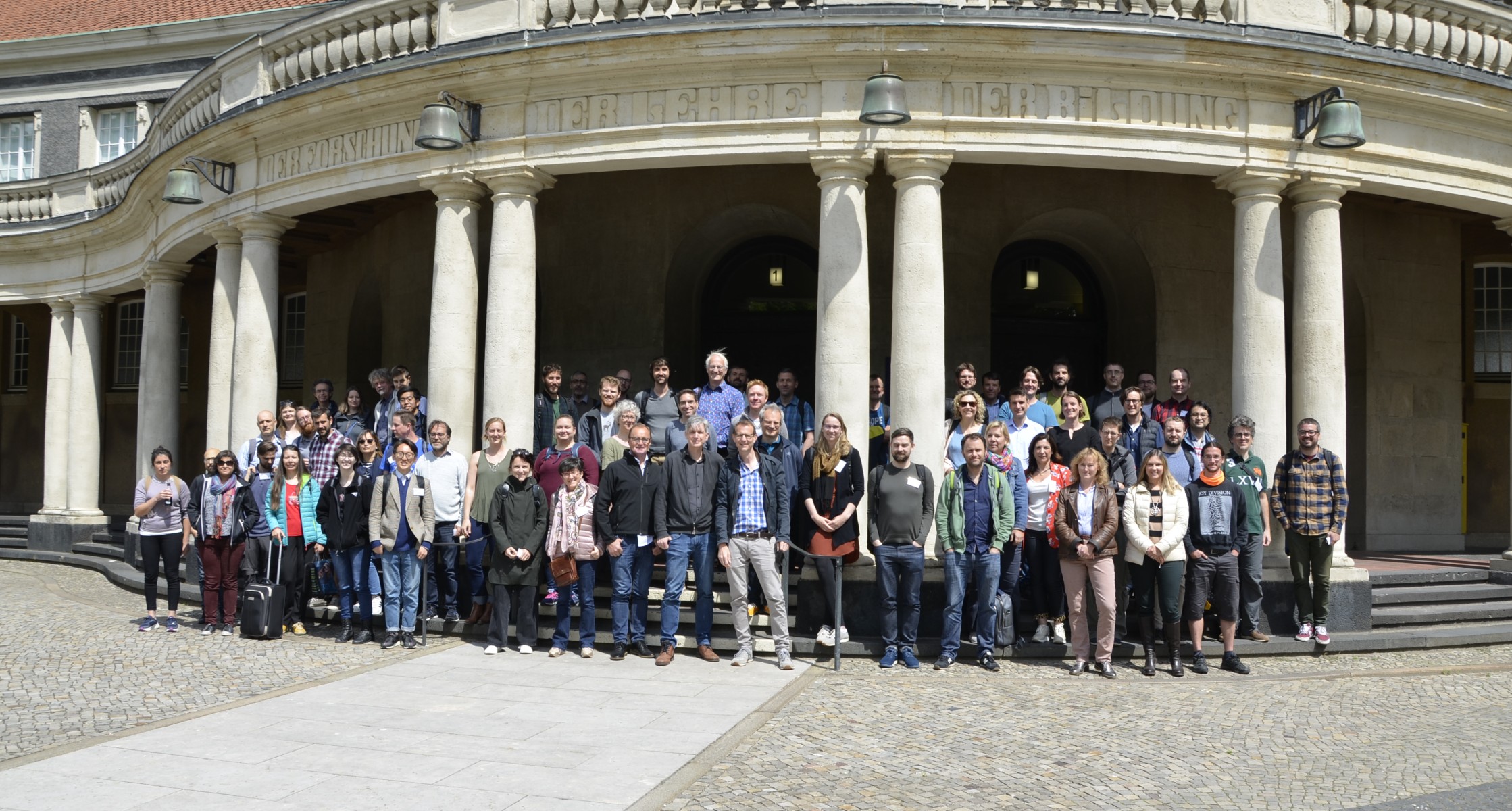News
Introducing the new Galactic deputy Project Scientist
2022-11-29
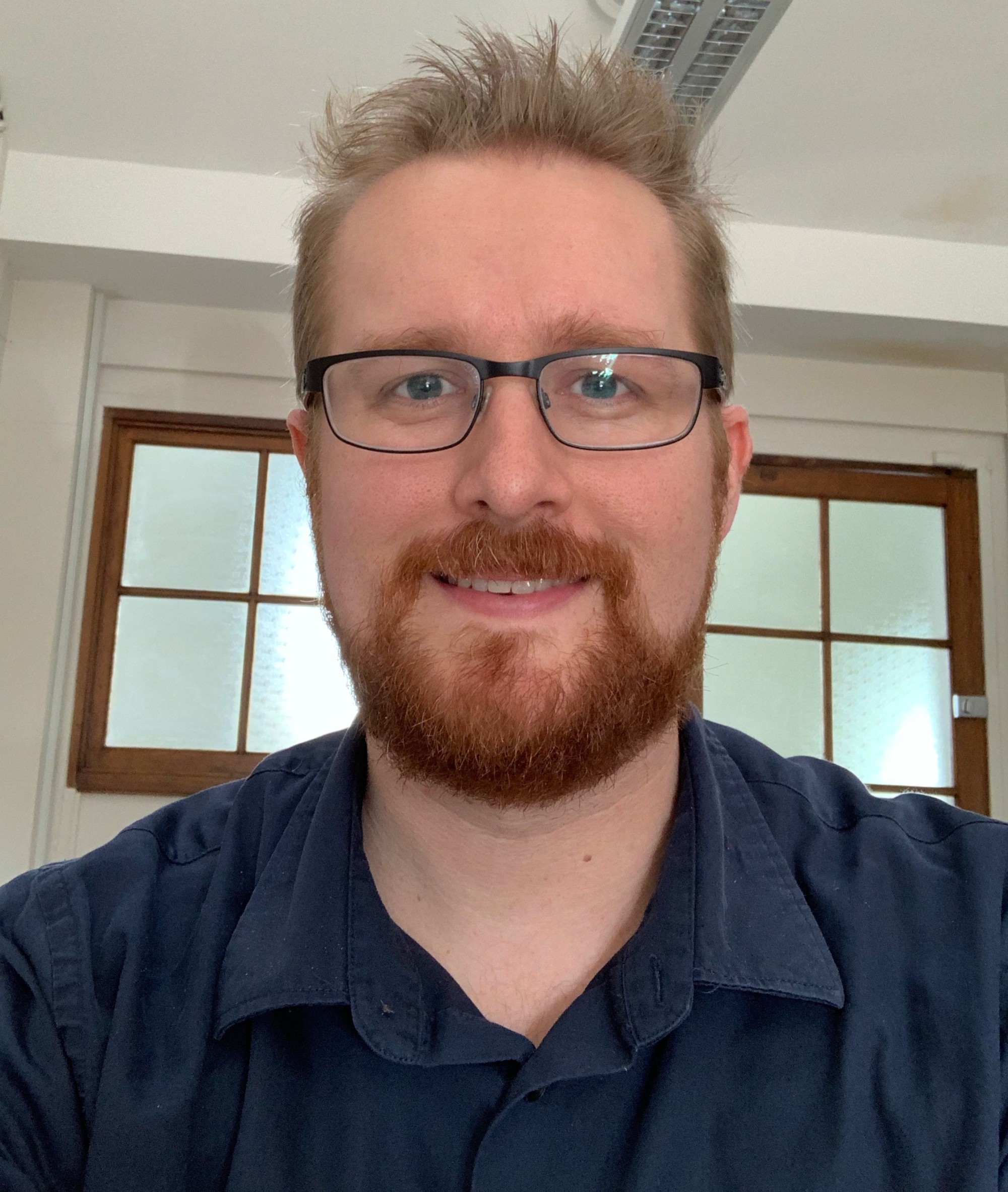
The 4MOST Project Scientists, Karin Lind and Jon Loveday, are pleased to announce that, following this call for applications, Michael Hayden has been appointed as the new Galactic deputy Project Scientist. Michael has worked in the field of Galactic Archaeology for his entire career, making some of the first complete maps of the chemical structure of the Galactic disk and developing detailed chemodynamical models to explain the evolution of the Galaxy. He is working on using the Milky Way as a benchmark for galaxy evolution, from developing IFU-like observations of the Galaxy to being one of the leaders of the large ESO-MUSE program GECKOS. He has worked extensively on large-scale surveys throughout his career and developed the observing strategy for the GALAH spectroscopic survey. Michael thus brings a wealth of experience in the design and operation of large spectroscopic surveys to 4MOST, and he is eager to help shape a productive and welcoming research environment to ensure that all of the 4MOST Surveys will be successful.
The Project Scientists are joined by the Principal Investigator, Roelof de Jong, in extending their thanks to Diane Feuillet for her excellent work as the previous Galactic deputy Project Scientist.
4MOST All Hands Meeting 2022
2022-09-27
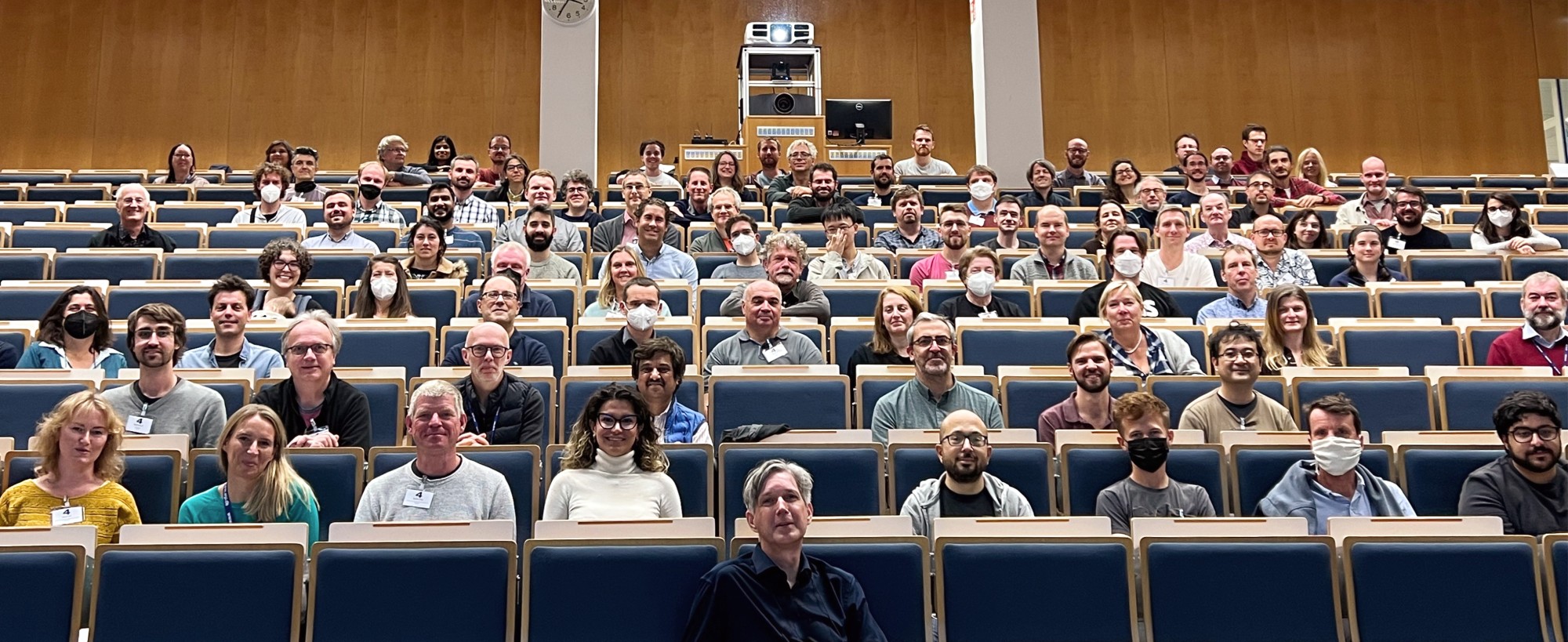
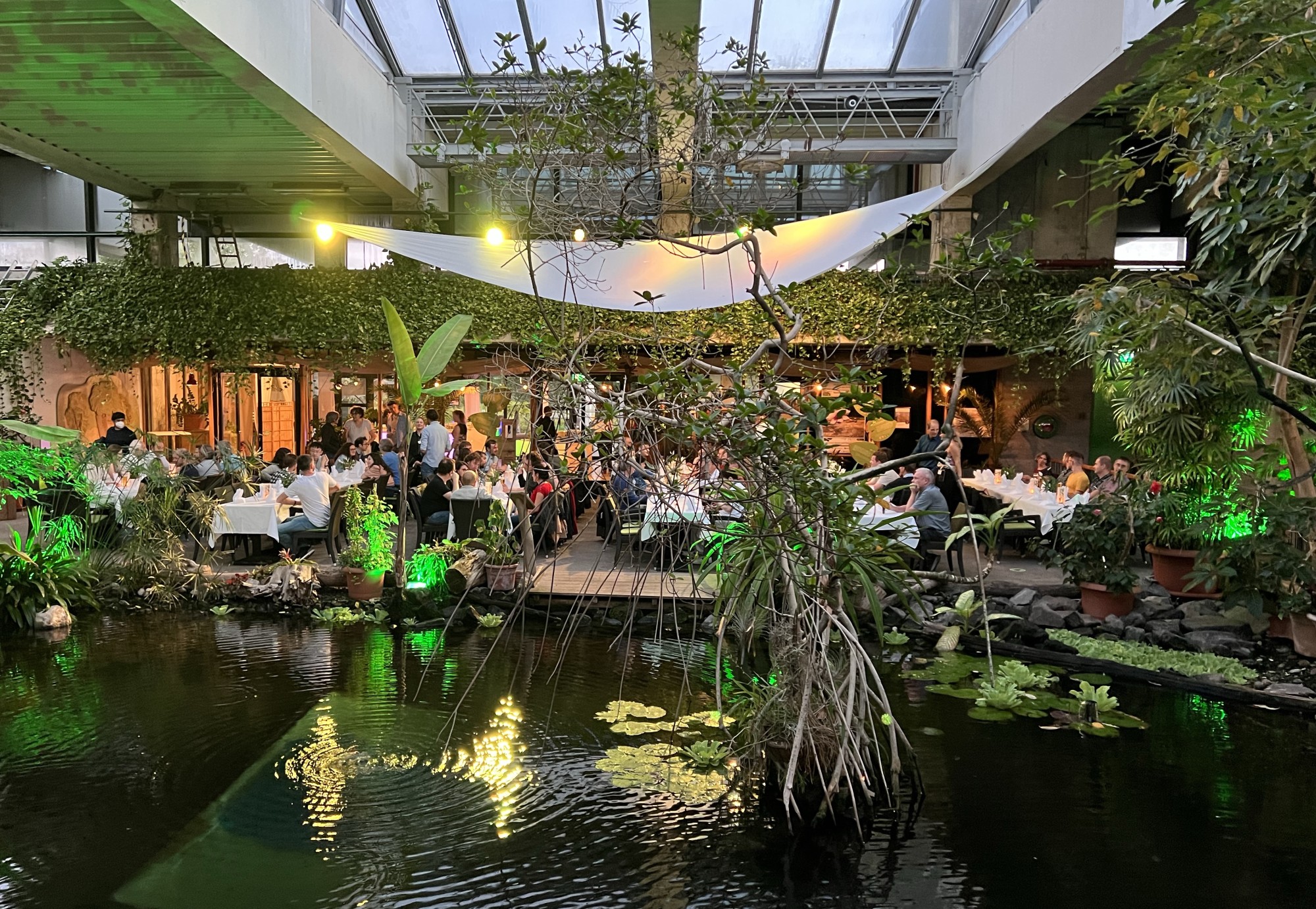
The 8th 4MOST All Hands Meeting (AHM) took place in Potsdam on 19 – 23 September 2022, bringing together 4MOST engineers, scientists, programmers, and managers from across the globe. The meeting was held in a hybrid format, with more than 100 4MOST members participating on site, while more than 150 members were registered to participate online. The meeting was was held at two locations: at the Albert-Einstein Science Park on the Telegrafenberg and at the AIP Campus site on the Babelsberg. The latter location allowed many of the participants to visit the AIP integration halls and labs to see the instrument being assembled.
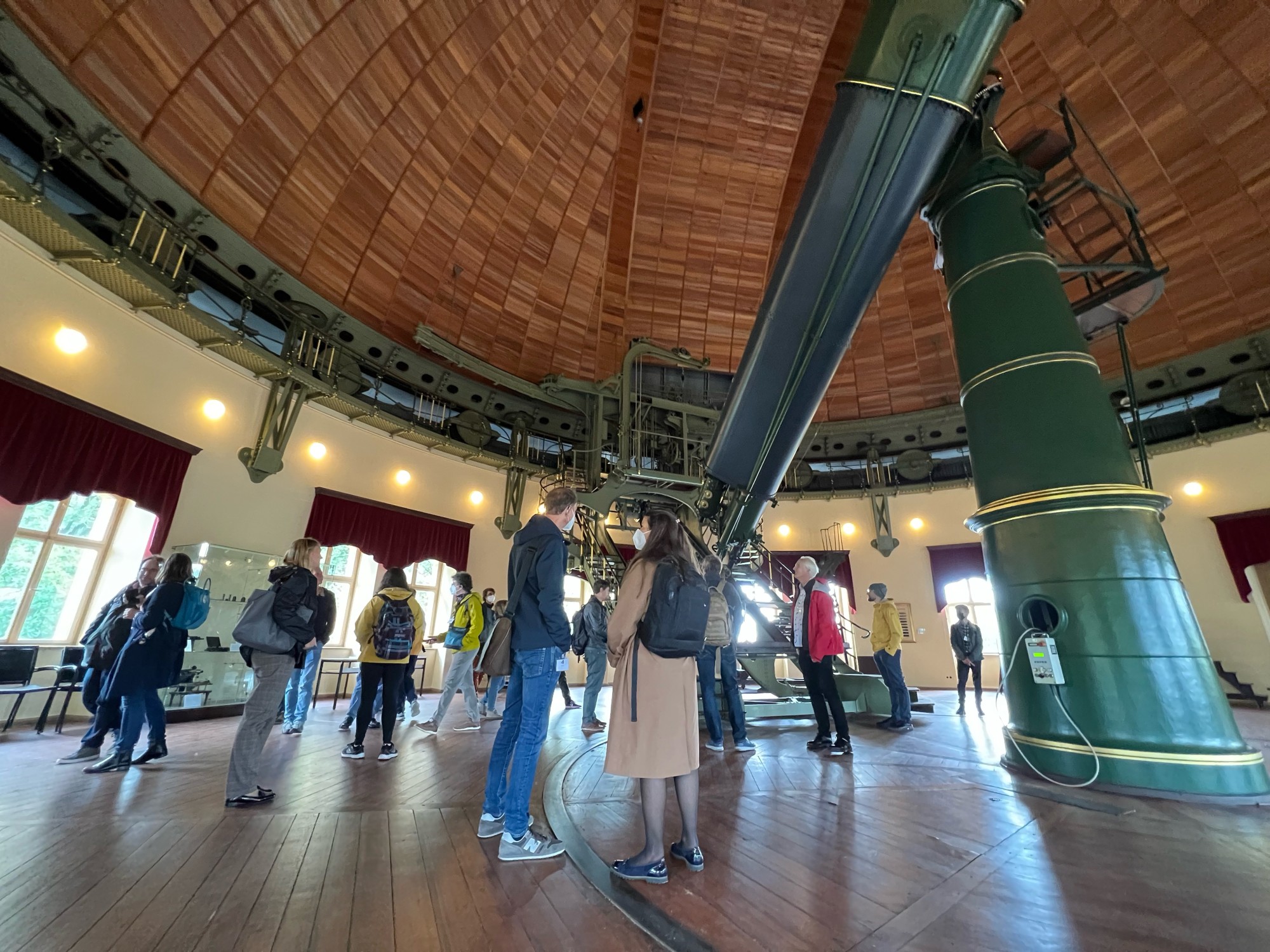
The entire team was very excited about the good progress the hardware is making, realising that the shipment of the instrument to the telescope is now scheduled to start in less than a year. The instrument engineers used their time to plan in detail the further assembly and testing process of the hardware in Potsdam, and to work on the integration and verification plans of the instrument on VISTA in Chile. The scientists continued to refine their plans for how to optimise the observing strategy based on the latest survey simulations, and discussed the data release plan. The operations branch of the project discussed the many operation rehearsals scheduled for the coming year and refined the requirements on the pipelines. Two new working groups kicked off at the meeting, one to establish detailed requirements for the early calibrations and science verification phase, and one to plan the data curation and data releases once the data flows from the various data reduction pipelines.
After a hiatus of three years due to the COVID-19 pandemic, all participants enjoyed the opportunity to connect directly with many colleagues. The possibilities to personally connect were further enhanced during the tour of the historic research facilities at the Telegrafenberg site, at the conference dinner in the hot tropical rain forest environment of the Potsdam BioSphäre, and while visiting the modern research facilities and 4MOST hardware at the AIP site.
4MOST science presentations
2022-09-24
The 4MOST Science Team will present the science that 4MOST will address in a mini-series of six online seminars, one per month from October 2022 to March 2023. In each 2 h session we will enjoy three 20 min presentations (each with an additional 20 min for discussion) from Consortium and Community Surveys that work on closely related science. The seminars will be at a level understandable by the wider scientific community and highlight key progress made and current challenges faced. After each seminar, its recording will be made available here. The zoom connection details will be distributed by email.
Timetable of seminars (all times are CET):
| 20 Oct 2022 | 14:00 – 16:00 | The Milky Way halo and satellite galaxies | S1, S2, S14 |
| 29 Nov 2022 | 14:00 – 16:00 | Galaxy clusters and cosmology | S5, S8, S15 |
| 02 Dec 2022 | 10:00 – 12:00 | The Milky Way disk and bulge | S3, S4, S11 |
| 18 Jan 2023 | 14:00 – 16:00 | AGN and quasars | S6, S16, S17 |
| 14 Feb 2023 | 14:00 – 16:00 | Young stars, clusters, and the Magellanic clouds | S9, S12, S13 |
| 14 Mar 2023 | 10:00 – 12:00 | Galaxy evolution and supernovae | S7, S10, S18 |
Seeking 4MOST deputy Project Scientists
2022-09-05
A message from the Principal Investigator, Roelof de Jong, and the Project Scientists, Karin Lind and Jon Loveday:
The 4MOST Project seeks two deputy Project Scientists among our Project members to support the Project Scientists in their responsibilities.
The 4MOST science activities have been ramping up steadily in the past years and will continue doing so for the coming years. Especially the upcoming activities related to ESO’s Provisional Acceptance Europe review, the final survey preparation, and the commissioning, operations, and science verification will mean a very busy schedule for the coming two years.
Managing all these activities will be a too large a task for our two Project Scientists on their own and therefore we are seeking to fill two deputy Project Scientist positions in the 4MOST organisational structure, one galactic and one extra-galactic. The exact division of tasks will be defined between the current PSs and the new deputy PSs. The work split may allow the current PSs to concentrate on strategy and planning, while the deputy PSs could work on progress monitoring and managing smaller working groups for instance.
Job summary:
The 4MOST deputy Project Scientists support the Project Scientists in their 4MOST activities. As such they play a key role in building a collaborative culture in the 4MOST Science Team. They help reviewing the deliverables for the science team at each project milestone and maintaining the schedule to produce these deliverables. They support the Instrument Scientist and the Operations Manager and Scientist in the management and verification of requirements. They promote 4MOST science to the external science community to ensure a strong engagement of the community in 4MOST. They support the 4MOST PI in maintaining a long-term science vision for the 4MOST Project as required by the latest science developments.
Tasks:
- support the Project Scientists in guiding to the science development effort of 4MOST
- help building a collaborative Science Team by supporting the organising of meetings, setting up communication channels and engaging 4MOST members in activities
- contribute to the reviewing of deliverables of the Science Team for each Project milestone
- help maintain the schedule for the Science Team deliverables
- review of documents and templates relevant to the management of the Science Team
- support the Instrument Scientist in managing and verifying the 4MOST instrument requirements
- support the Operations Manager in managing and verifying the 4MOST operations requirements
- support the Operations Scientist and the Survey PIs in developing the optimal 4MOST survey strategy
- support the Project Scientists in their science and public outreach activities by giving presentations, by organising meetings, and by writing publications
Selection criteria (not all necessarily required):
- for the deputy Galactic Project Scientists: a good knowledge -including the recent literature- of stellar spectroscopy and analysis, and of models of the evolution of stars and stellar populations in and/or models of the formation and evolution of the Milky Way and its satellites that can be spectroscopically analysed with 4MOST, with preferably a publication track record in several of these areas
- for the extragalactic deputy Project Scientist: a good knowledge -including the recent literature- of spectral analysis of galaxies and AGN, of deriving cosmological and galaxy/AGN parameters from redshift survey observations, of galaxy and AGN evolution models and of cosmological models, with preferably a publication track record in several of these areas.
- experience with spectroscopic observations and data analysis
- good communication skills
- collaborative and inclusive mindset
- time commitment (at least 20% of time, at peaks more, not funded by the Project)
Applications are reviewed by a selection panel that contains the 4MOST Project Scientists and is chaired by the 4MOST PI.
Beside the competence, motivation and availability of candidates, the selection committee will also pay attention to gender and diversity balance and implications for early career scientists. We encourage all interested individuals, including women and underrepresented minorities, to apply.
The 4MOST deputy Project Scientist position will normally allow one to qualify for a permanent 4MOST Science Team membership. Deputy Project Scientists qualify for co-authorship on all 4MOST publications relevant to their position.
The positions are foreseen to have a term for three years initially, with the possibility for renewal.
Application instructions:
Please send your applications (≤1 A4 page) with
- a statement supporting your qualification, relevant background, and special considerations for the deputy Project Scientist position
- a short vision on how you would implement your role as deputy Project Scientist
- your commitment of time in your role as 4MOST deputy Project Scientist
- a short CV (separate A4 page)
to the 4MOST PI (pi@4most.eu). The selection process will start 30 September 2022, and will continue until the positions are filled.
4MOST Calibration System arrives in Potsdam
2022-08-18
The Project Manager, Joar Brynnel, is pleased to report that on 15 August 2022 the 4MOST Calibration System hardware arrived safely at the AIP in Potsdam from NOVA (Dwingeloo). It was received by AIP staff, and shortly thereafter Ramon Navarro and Ioannis Politopoulos from NOVA arrived as well. The shipping boxes were unpacked and no damage was noted. Over the next few days, the Calibration System will be reintegrated and tested. At the same time, the LRS-A spectrograph is being cooled down, and the Calibration System will be connected to LRS-A for the first time in order to verify the performance of both subsystems. We are very excited to take this next step in the 4MOST system integration and validation process!
Joar Brynnel: “I would also like to take this opportunity to announce that the management of the Calibration System WP has now been officially transferred from Johan Pragt to Ramon Navarro. Johan will now move to another project, and we would like to thank him for his efforts and contributions to the 4MOST project over the past years. In particular, the dinner at the Bospub during the 2017 Busy Week in Dwingeloo was an event that we will never forget! Again, many thanks to Johan, and a warm welcome to Ramon.”
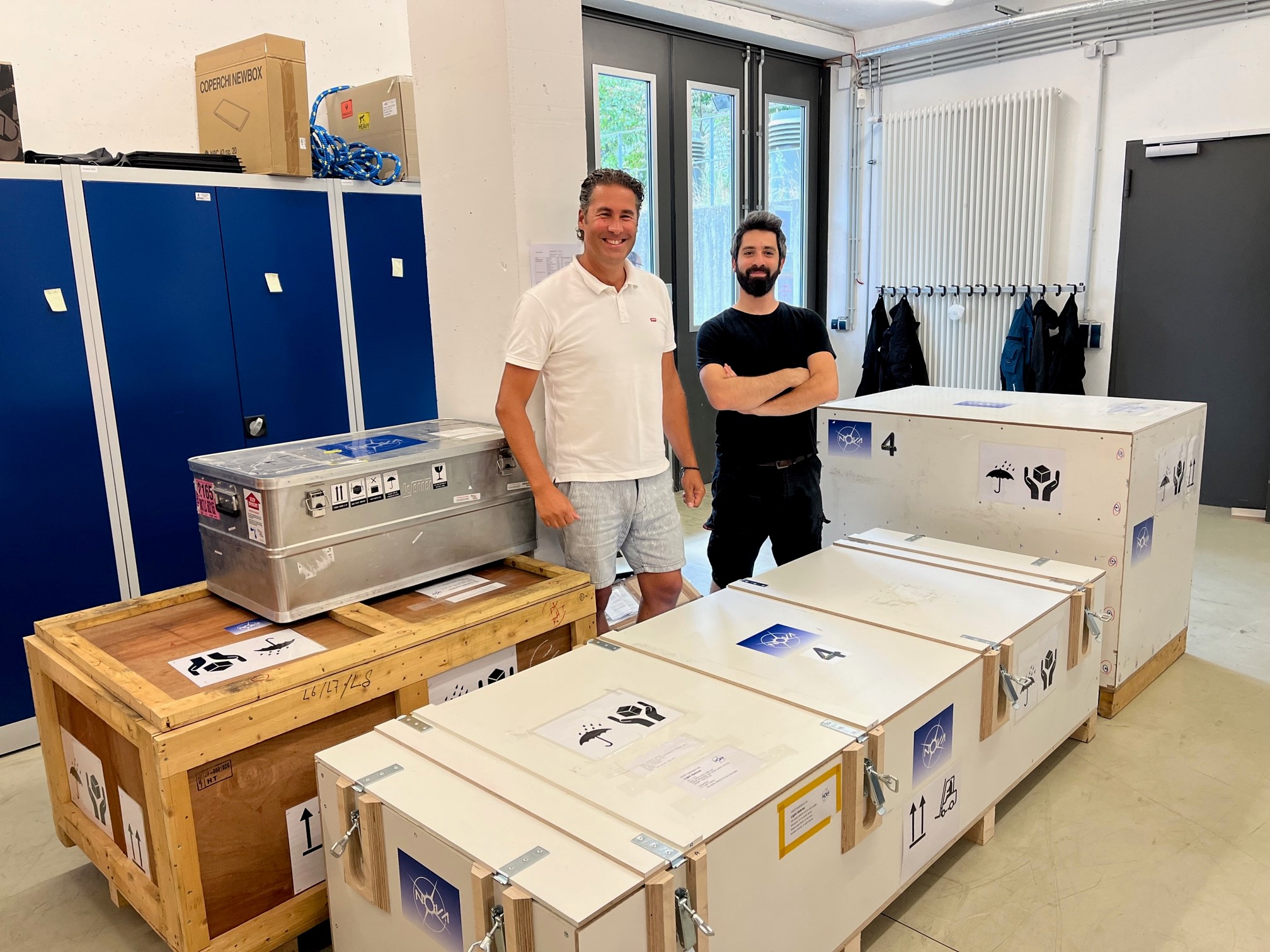
Closing the loop between AESOP and Metrology
2022-08-17
One of the more complex functions of 4MOST is the process of positioning all fibre tips exactly on the objects to be observed for every observed field. To accomplish this all the fibres are backlit and their positions are measured very precisely by four cameras mounted on the M2 spider of the VISTA telescope during telescope and instrument setup. Deviations from the desired positions are then sent to the fibre positioner(called AESOP) as corrections. This process is repeated until (essentially) all fibres are in the correct position.
Roland Winkler reports: “After months of development time, the Instrument Control Software is now able to control AESOP’s spines in closed loop with the Metrology system. In the AIP integration hall four Metrology cameras were mounted inside the MetCam Test Frame. This was connected to the Focal Surface Alignment Stand, which in turn contained AESOP.
Getting all electronics and software components ready and working with each other was a joint achievement by AAO, LSW, AIP and ESO. The team had to overcome a large number of obstacles, of which some had been foreseen but many others were unexpected, such as AESOP electronics failures and computer network problems. Through the diligent support of Gerard Zins (ESO), the background software within the ESO software framework was completely rewritten in python to be able to quickly iterate on functionality and for ease of development.
Prior to closing the control loop, we were able to prove the capability of the Metrology system to measure spots with a precision of better than 3 µm. This precision is currently limited by residual errors in the optical model of the test stand (as the flat mirrors have quite a substantial surface profile), and by seeing in the lab. With better quality optics in the telescope, the first problem will go away while we expect roughly the same impact of seeing in the telescope.
Currently, a complete fibre re-configuration takes around 3 minutes for 7 AESOP iterations. The requirement for the combined system is 2 minutes, with a goal of 1 minute. We are confident to be able to reach the 2 minute requirement, as small amounts of measurement performance can be traded for large amounts of time savings during the coordinate transformation step.”
This is a major step forward for 4MOST system testing in Potsdam. While there is still work remaining, it is very encouraging that the system is now fundamentally working and showing promising performance. Congratulations to all involved!
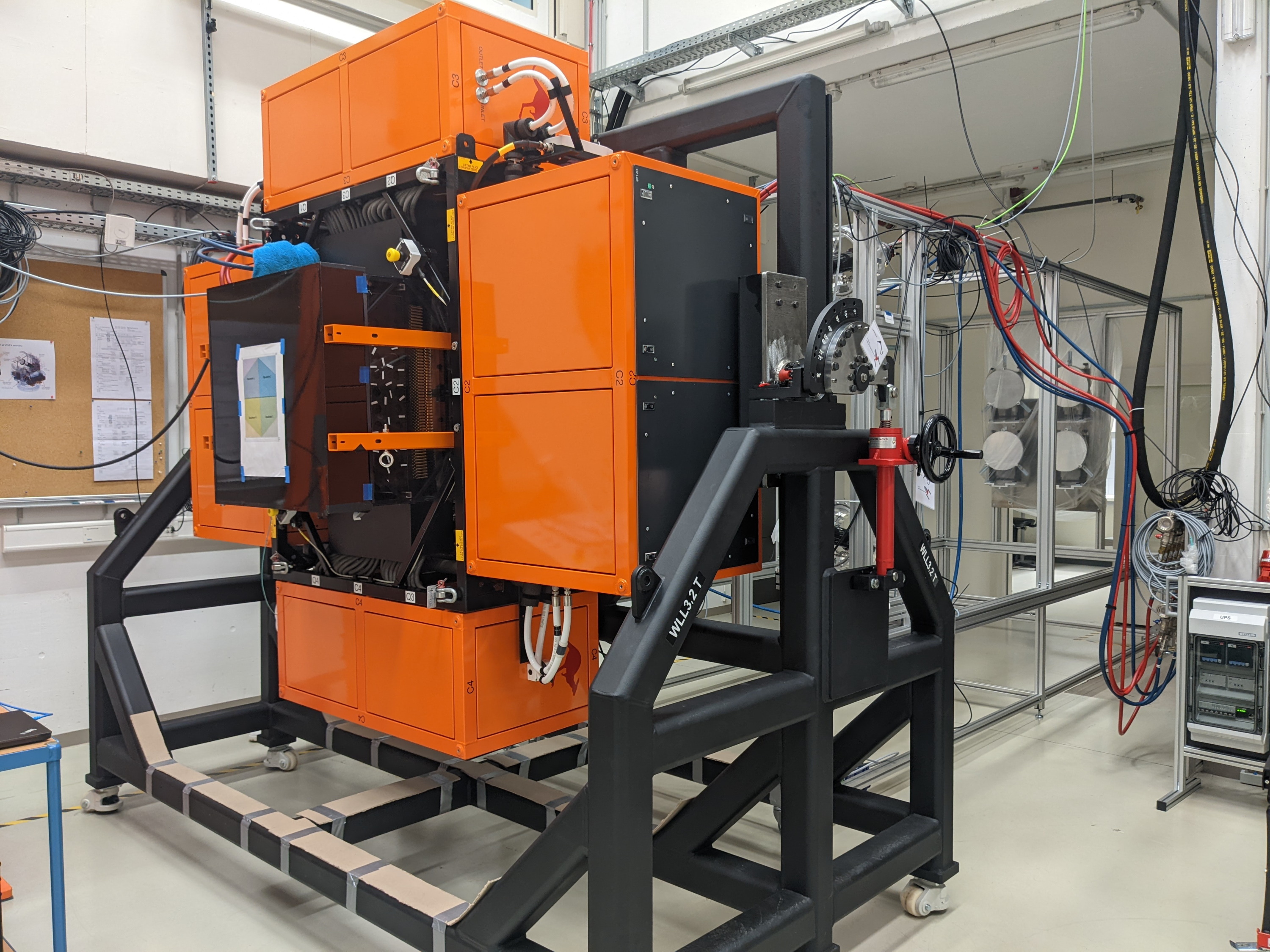
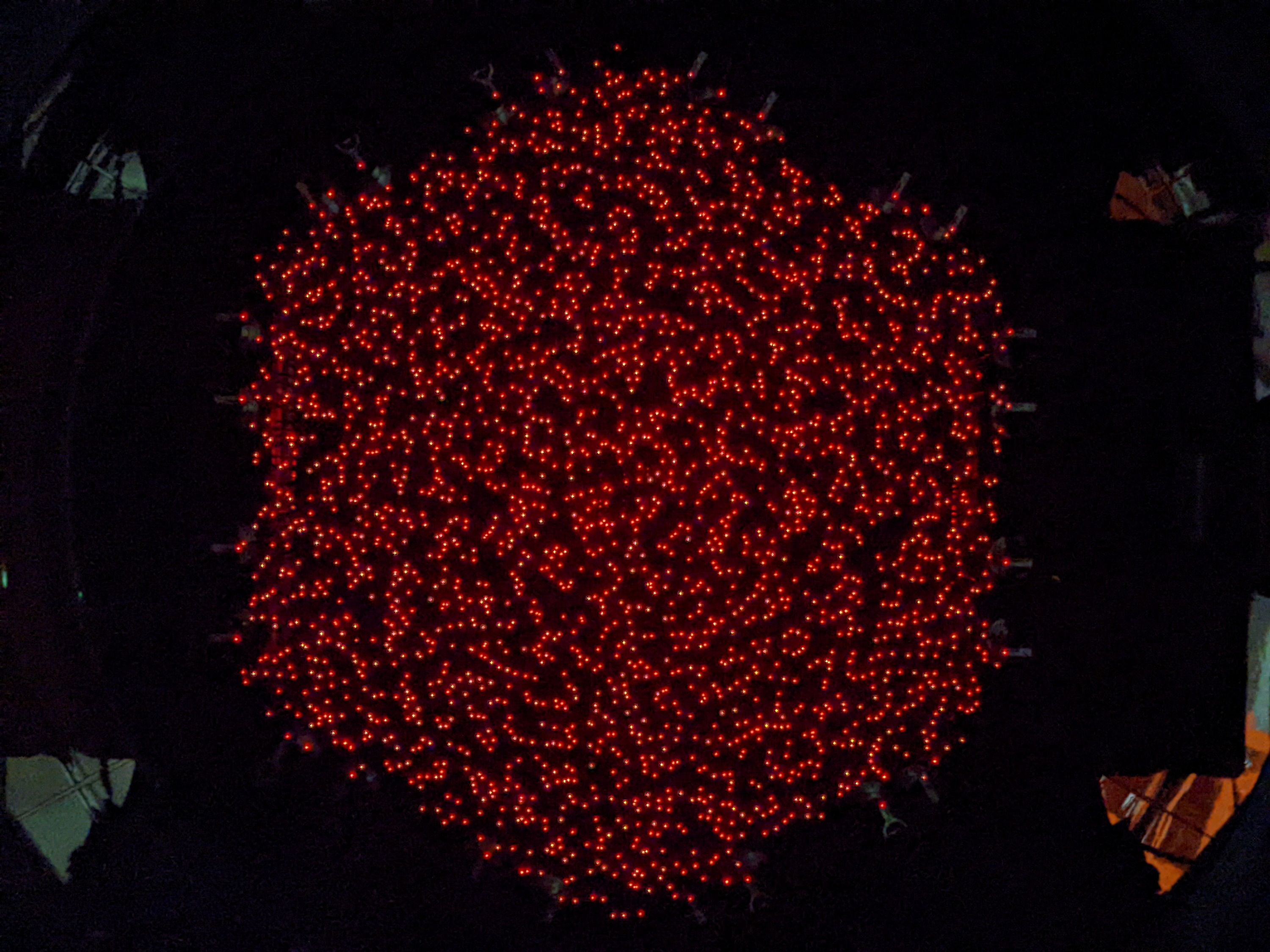
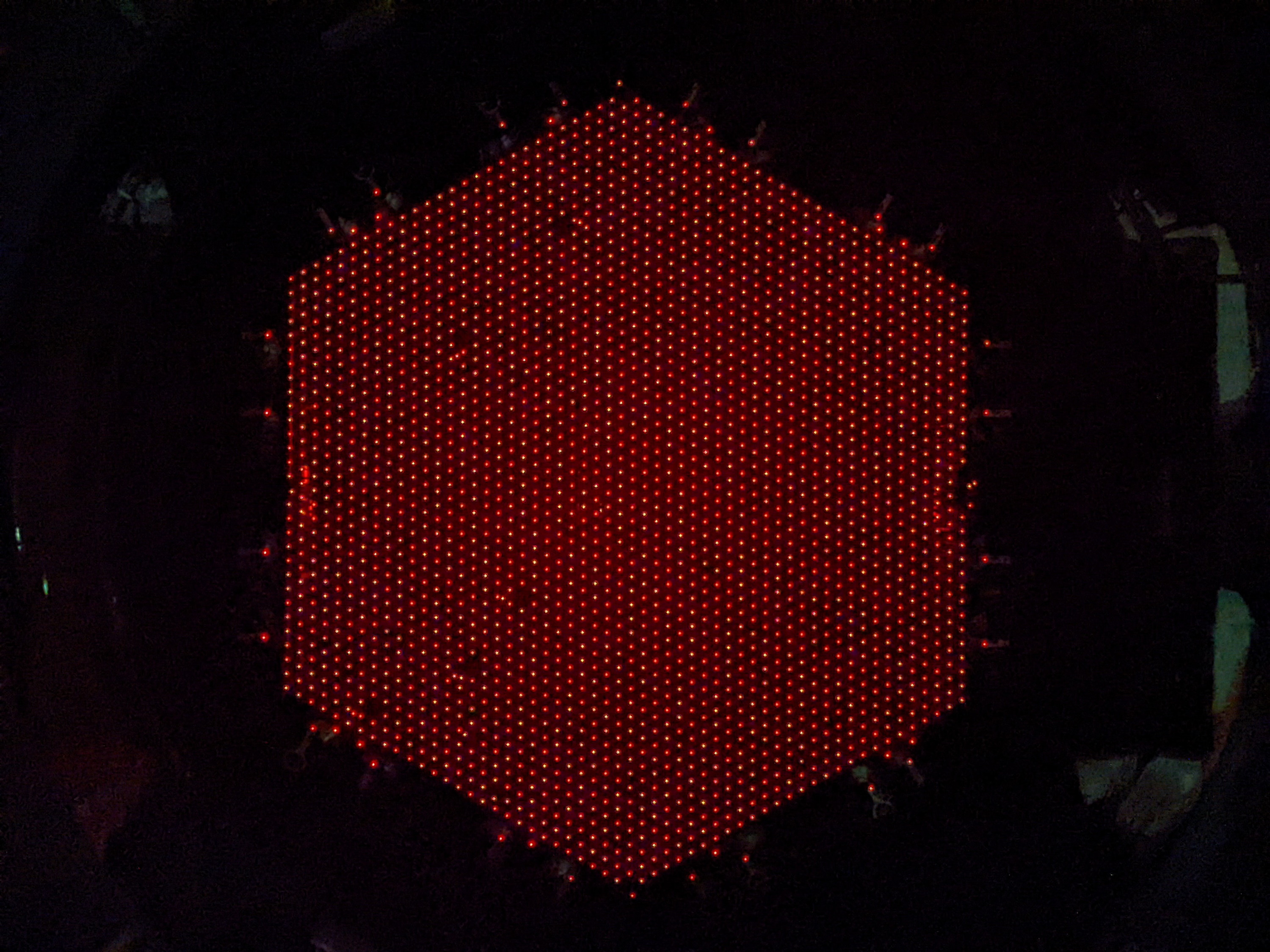
4MOST Control Electronics delivered to Potsdam
2022-07-17
The Project Manager, Joar Brynnel, is happy to report that on 13 – 14 July 2022 the two main cabinets with 4MOST control electronics were delivered and successfully installed in the AIP integration hall. In addition, the 4MOST Network and Workstation cabinet was installed in the computer room adjacent to the integration hall. All of these had previously been deployed at various 4MOST partner sites for subsystem operation.
This was a major effort coordinated by MPIA (Michael Lehmitz and Tobias Adler) with support from AIP (Deborah Sobiella, Allar Saviauk, Carlos Rodriguez, Thomas Hahn, Rainer Herbst, Michael Furch, Henrik Gieseking, Roland Winkler, and others). With these cabinets available at the AIP we are now able to control and operate all 4MOST subsystems using the final control system, which is an important step in preparation of the upcoming end-to-end system testing activities. Many thanks to all involved and we are looking forward to continuing the system integration and verification using the real control system!
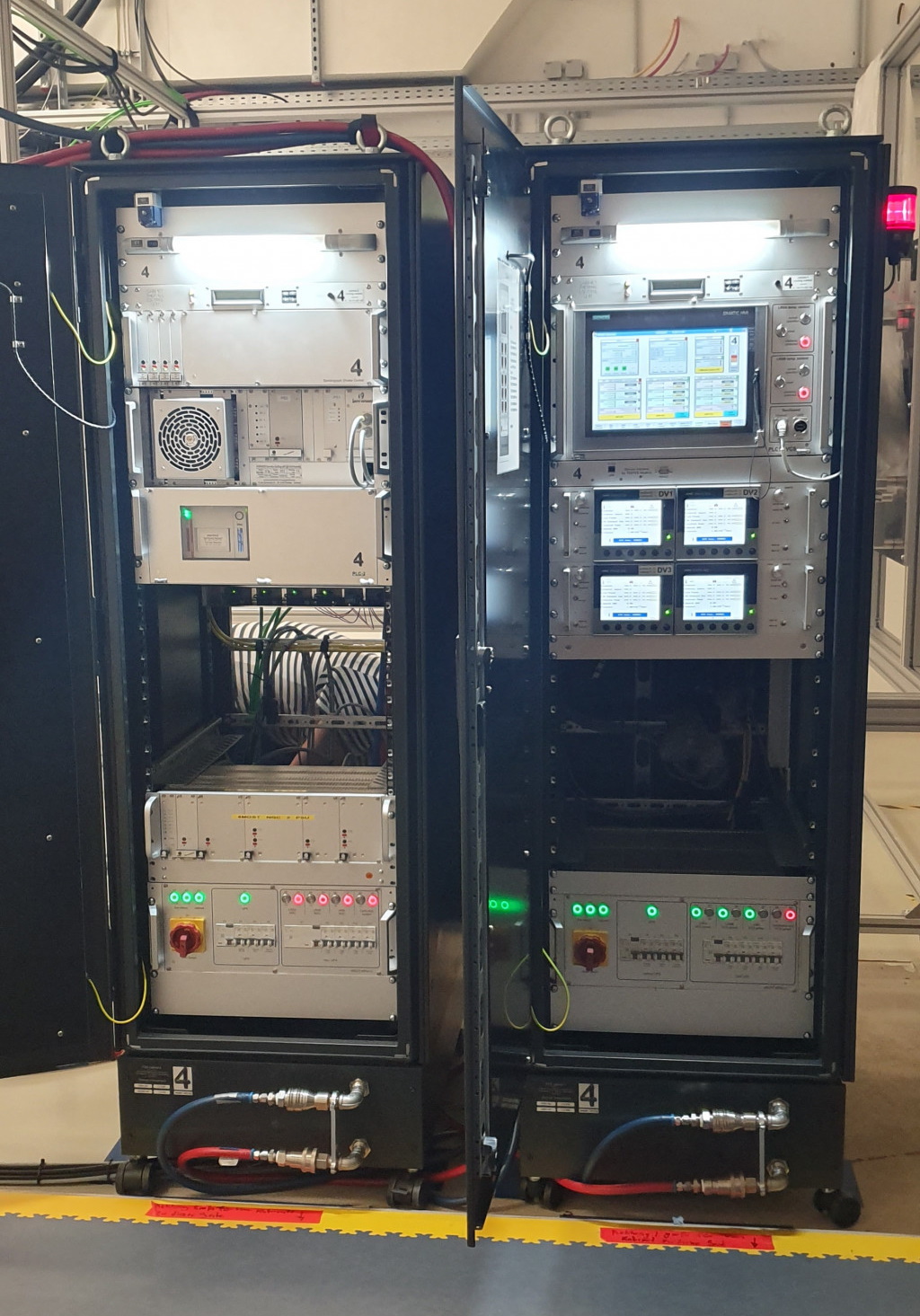
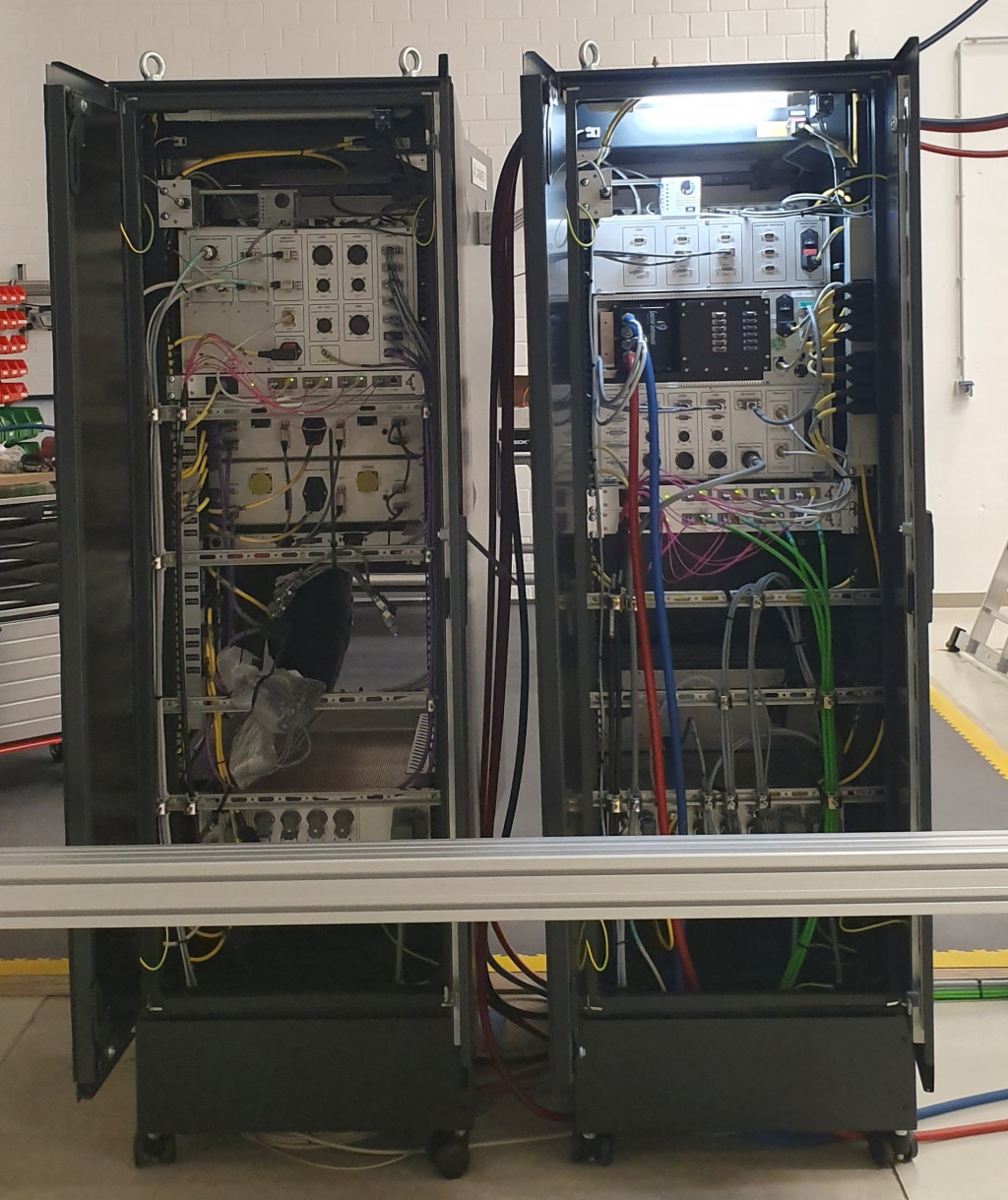
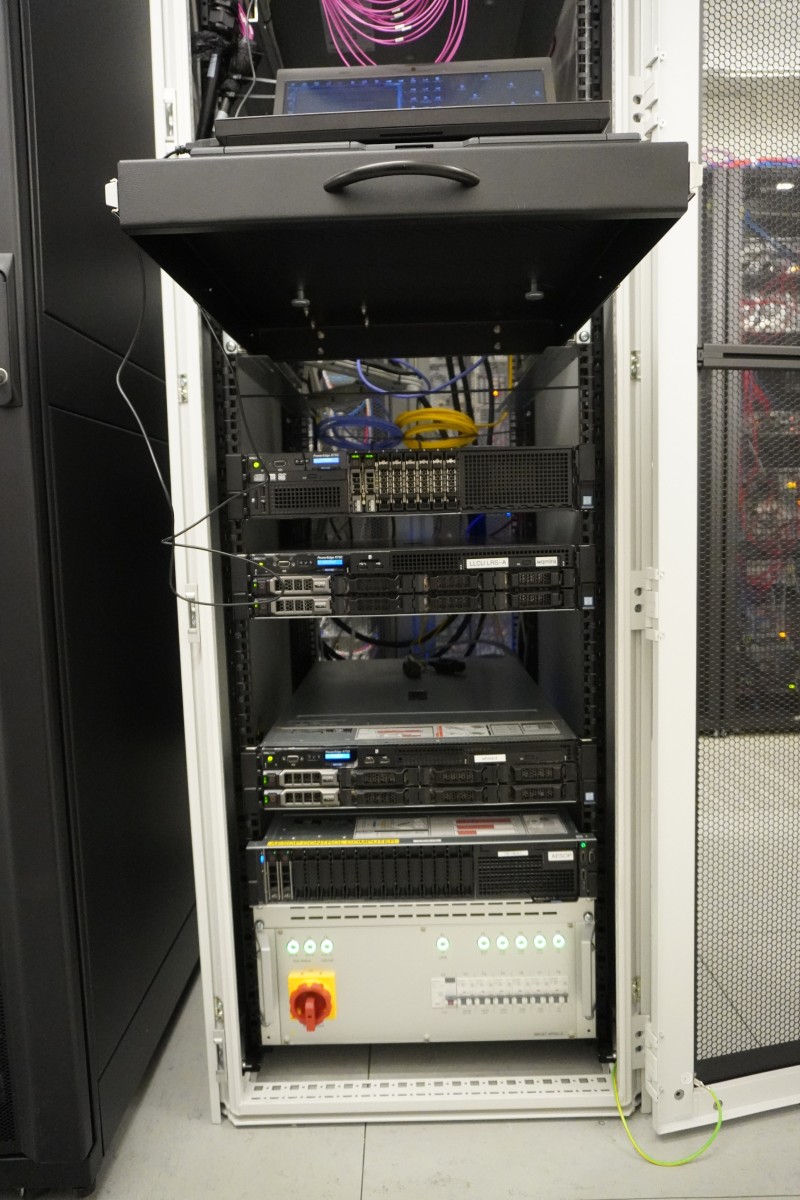
4MOST Wide Field Corrector installed on the Cassegrain Test Stand
2022-07-15
The Project Manager, Joar Brynnel, reports:
The 4MOST Wide Field Corrector (WFC) is a large optical system to be mounted on the VISTA telescope in front of the fiber positioner to correct the telescope beam and to create a suitable focal plane. The six large lenses in the WFC, with a diameter of almost one meter, were manufactured by KiwiStar Optics in New Zealand. They were then sent to UCL in London where the optics were installed in their mechanical structure and optically aligned.
On 28 May 2022, the WFC was delivered to the AIP in Potsdam. As the 4MOST WFC is the most expensive subsystem built and delivered by the 4MOST consortium, it was a big relief to learn that the integrated WFC had survived the transport from London to Potsdam without any damage.
On 14 July 2022, the WFC was mounted for the first time on the Cassegrain Test Stand (CTS) in the AIP integration hall. As this was the first time the WFC was handled using its dedicated lifting tool, it was an exciting operation that required quite some preparation. We are very happy to report that the handling and installation went very smoothly and according to plan. Michael Schröck, the WFC work package manager reports: “The installation of the Wide Field Corrector on the Cassegrain Integration Stand was a long awaited handling maneuver to be performed at AIP, with many first time applications of handling tools and hardware combined in one procedure. Thanks to a committed team, careful preparation, and some amount of luck the whole effort went very smoothly. The WFC was successfully installed on the test stand in two hours, verifying the fit of individual components and planned tasks during the process.”
The installation of the WFC on the CTS is an important milestone for 4MOST system integration activities, and we can now continue to integrate the Acquisition & Guiding subsystem, Focal Surface Test Tools, and the Cassegrain Cable Wrap on the CTS, which, when completed, will mark the beginning of full system integration. Fingers crossed for continued success in the integration hall!
Time lapse video of moving the WFC from its trolley to the CTS using the overhead crane. In the video: Mark Cunningham (UCL), Carlos Rodriguez, Michael Schröck, and Allar Saviauk (AIP).
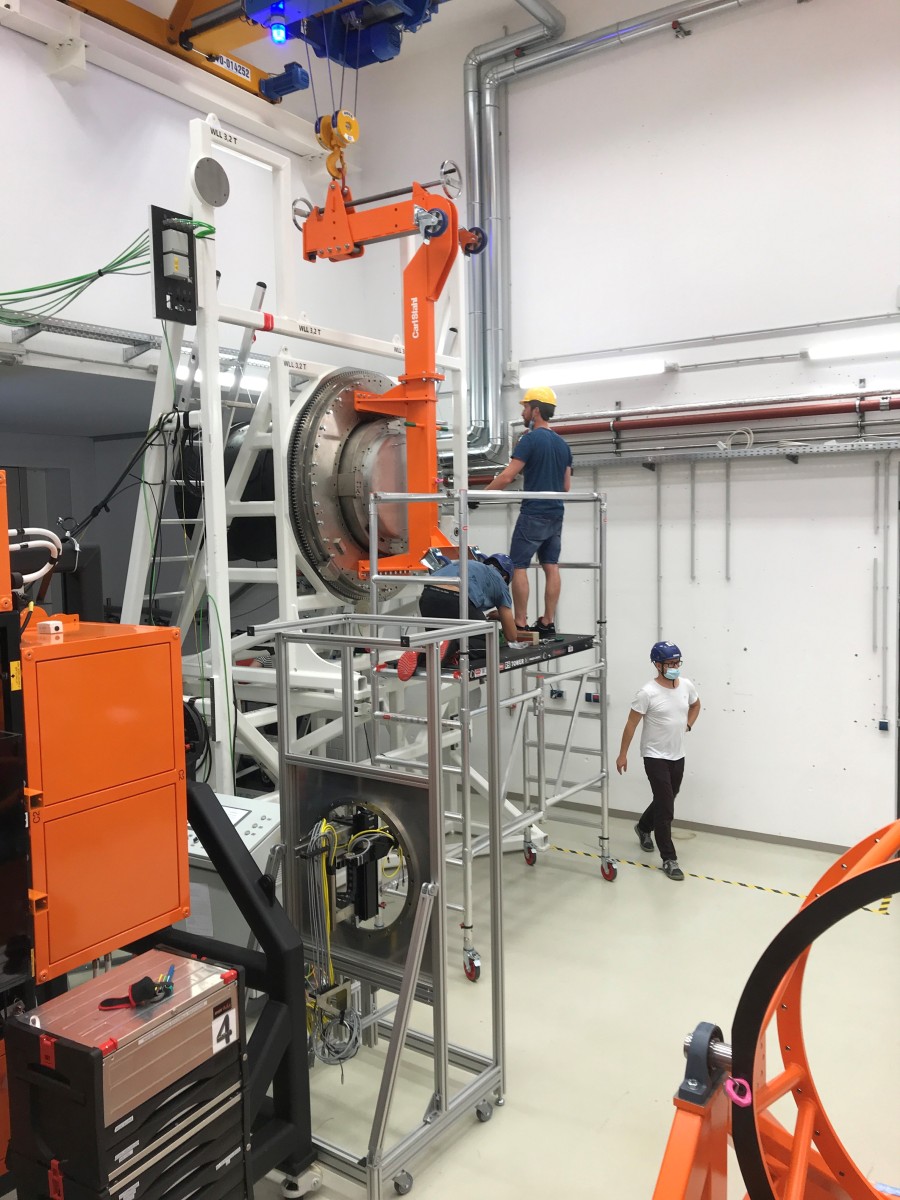
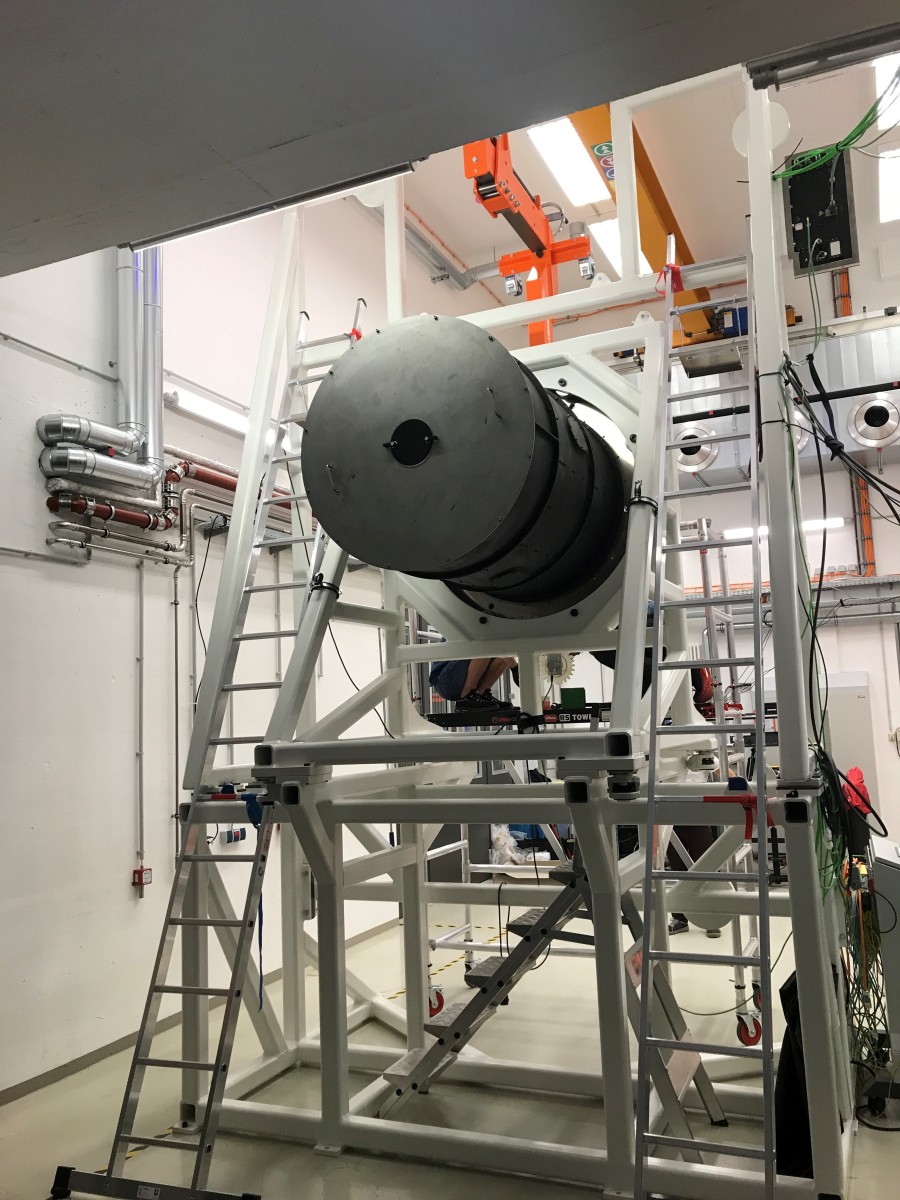
Update on Local Acceptance Reviews
2022-06-14
The Project Manager, Joar Brynnel, reports:
As the hardware of the 4MOST sub-systems is getting ready for delivery, the activity connected to the Local Acceptance Reviews (LARs) is ramping up. On 09 June 2022, the LAR for the Calibration System was held, followed by LAR part 1 for the High Resolution Spectrograph (HRS) on 10 June 2022.
The Calibration System hardware was brought from NOVA to LSW in Heidelberg on 07 June 2022 for final tests together with the HRS. After re-assembly of the Calibration System hardware, data was collected for performance verification. The formal LAR meeting was scheduled for 09 June 2022, and it was attended by NOVA (Johan Pragt, Ramon Navarro and Ioannis Politopoulos), ESO (Jeff Pirard), and the Project Office (Olga Bellido, Aida Ezzati-Amini, Steffen Frey, Domenico Giannone, Roelof de Jong, Genoveva Micheva and Joar Brynnel). The LAR meeting was graciously hosted by LSW. We were able to go through the complete set of LAR tests and checks, and an action item list was agreed on. As the Calibration System hardware still needs some work, it was decided to ship it back to NOVA after the LAR. A follow-up meeting has been scheduled for 8 – 10 August 2022 to close out the open action items. The Calibration System is expected to be shipped to the AIP for 4MOST system integration and testing on 11 – 12 August 2022.
Regarding the HRS, it was decided to split its LAR into two parts: the first part comprised the review of the compliance matrix to verify the optical performance of the HRS instrument. This part was held on 10 June 2022, and it was concluded that the performance of HRS is excellent with no major problems identified. The decision to split the HRS LAR in two parts was driven by the need to transfer the HRS control electronics to the AIP as soon as possible, at which point no more HRS data can be taken at LSW. As the documentation package is not yet complete, this will be reviewed during LAR part 2 in early August together with all other formal aspects of the WP. Shipment of the HRS to the AIP is scheduled for 22 August 2022.
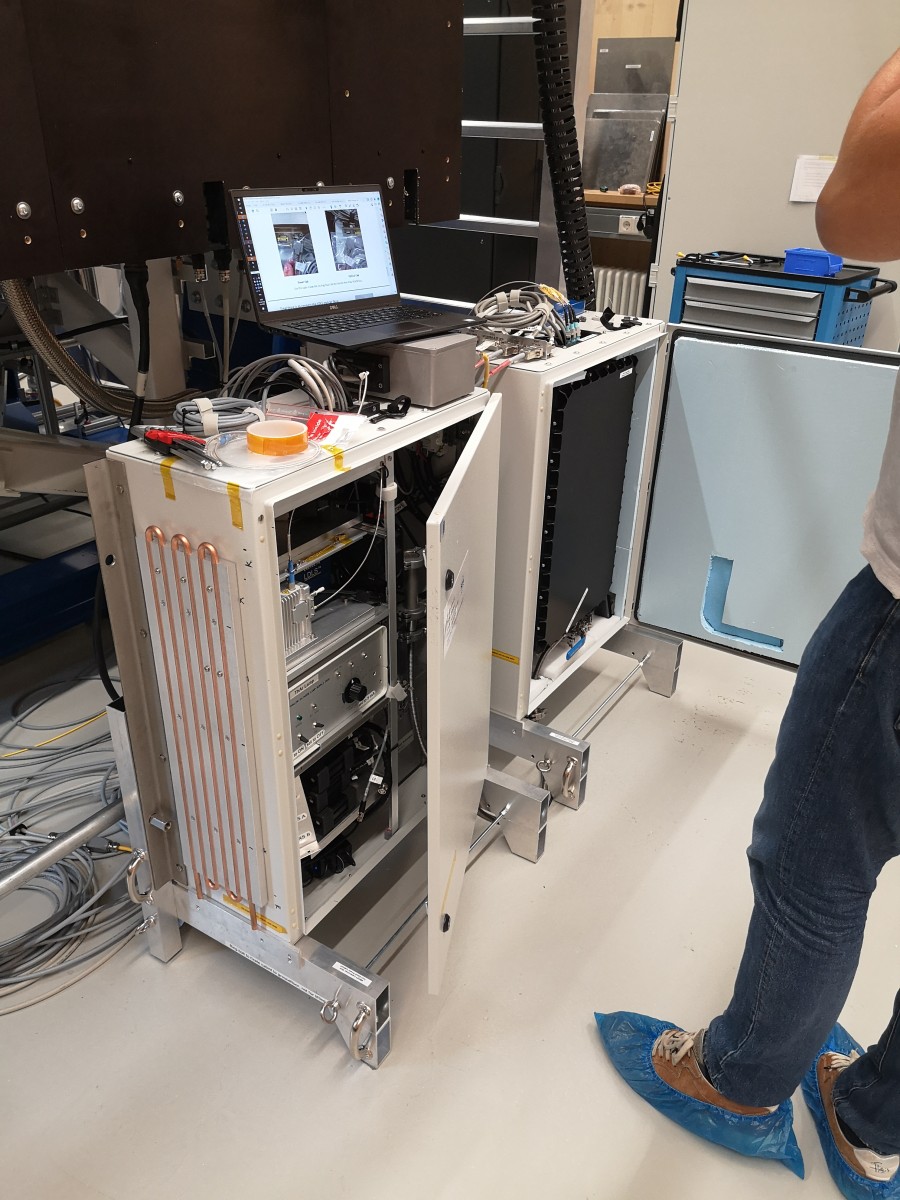
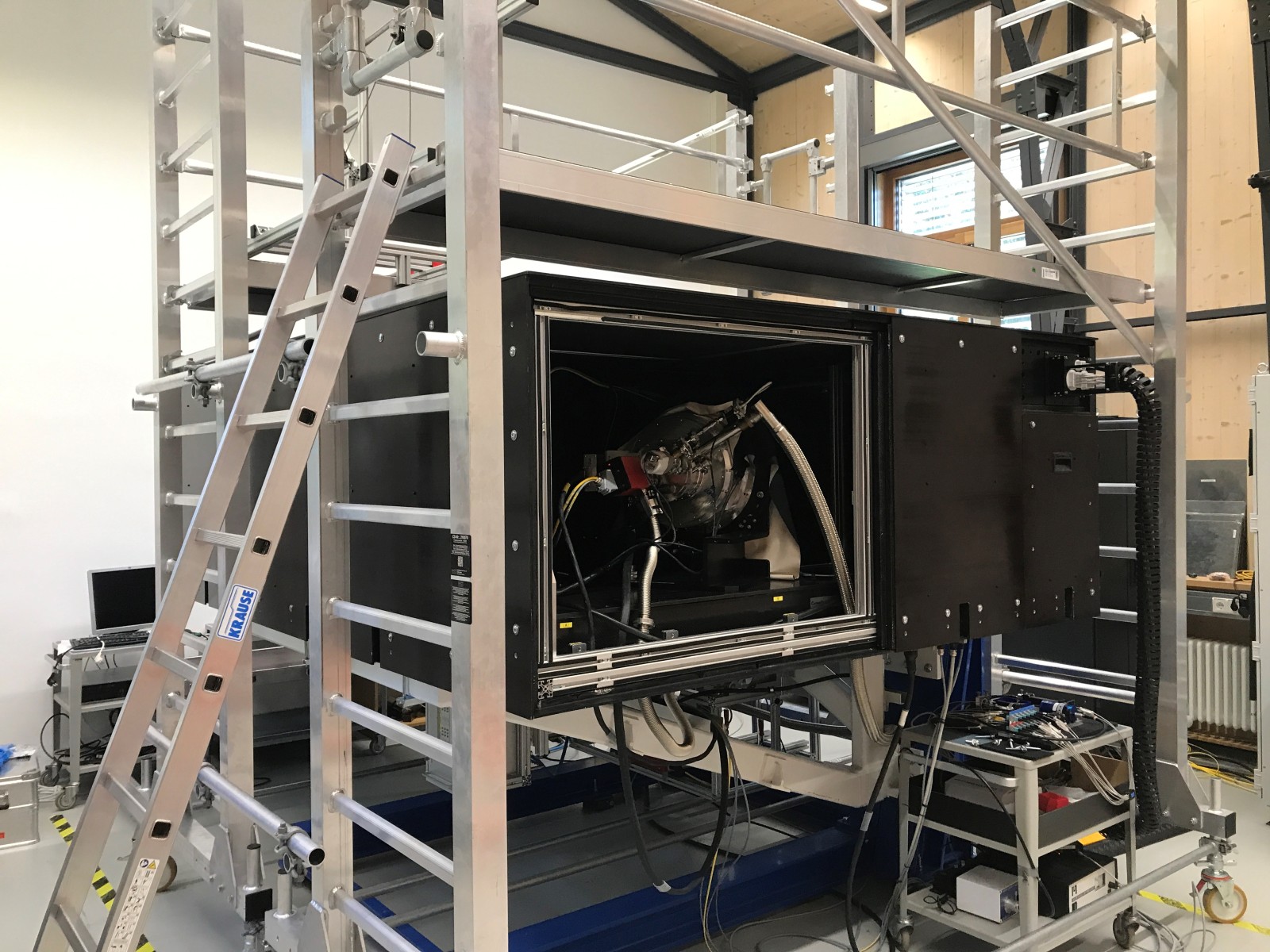
4MOST Science Team Meeting 2022
2022-05-27
The 4MOST Science Team Meeting 2022 was held at Hamburg University and online on 23 – 25 May 2022. This was the first STM to include the members of the recently selected Community Surveys and it represented the endpoint of the community onboarding programme, thus completing the integration of the Community Surveys into the 4MOST Science Team. With 168 registered participants, of which ~80 were present in Hamburg, the programme mainly revolved around discussions within and among the various Surveys and Infrastructure Working Groups. Reassuringly, after two years of pandemic and with many new colleagues having joined the team, the collaborative spirit of the 4MOST Science Team was found to be as healthy as ever.
